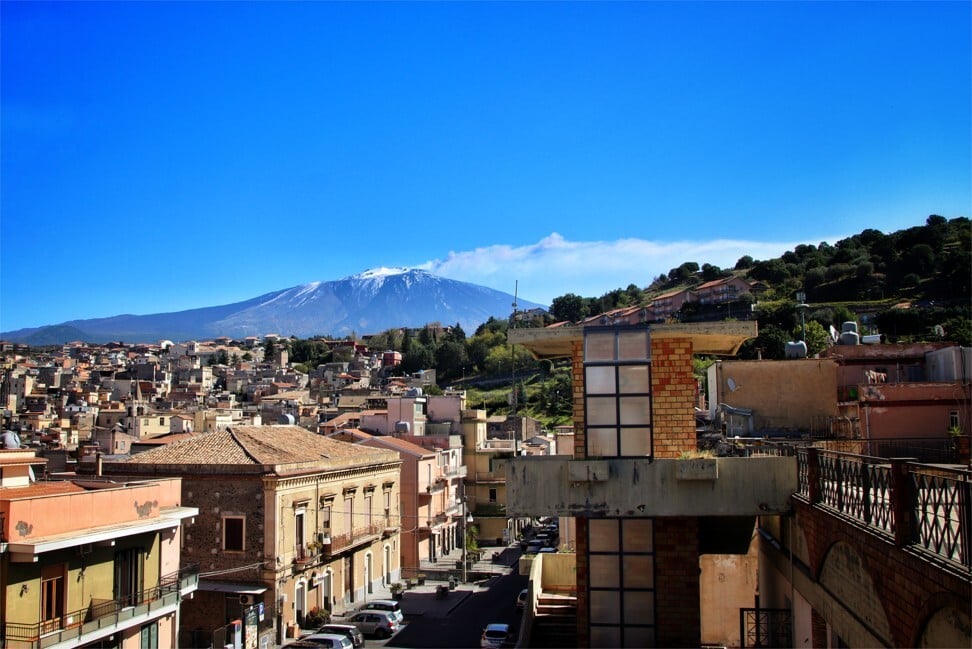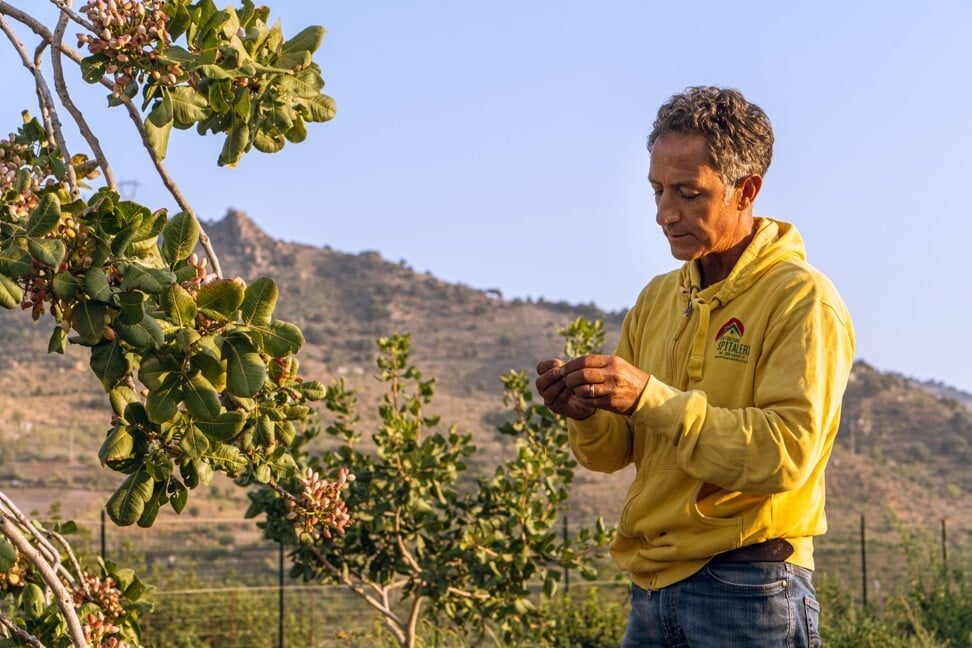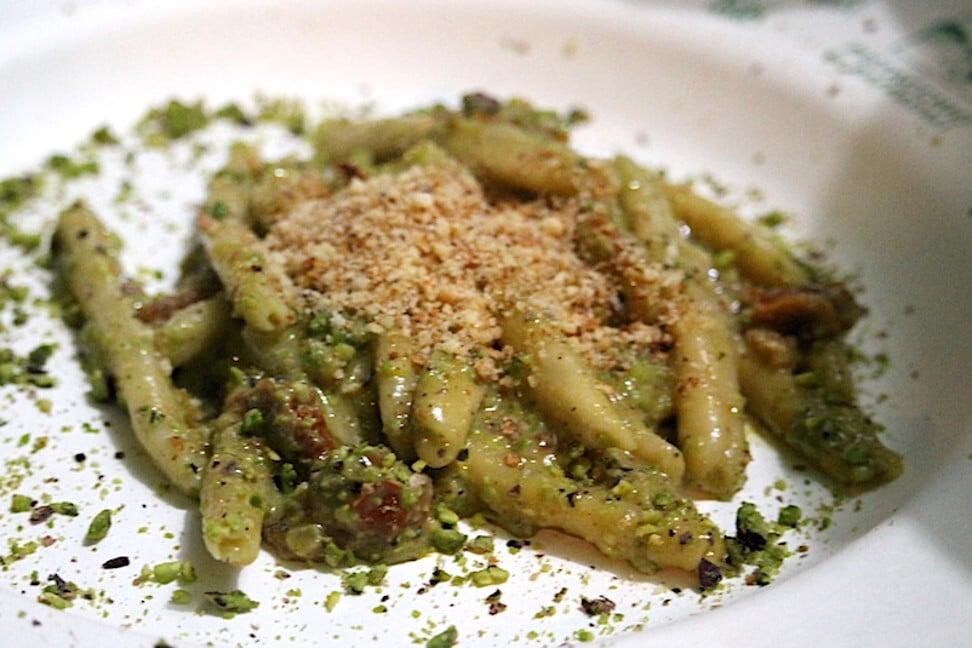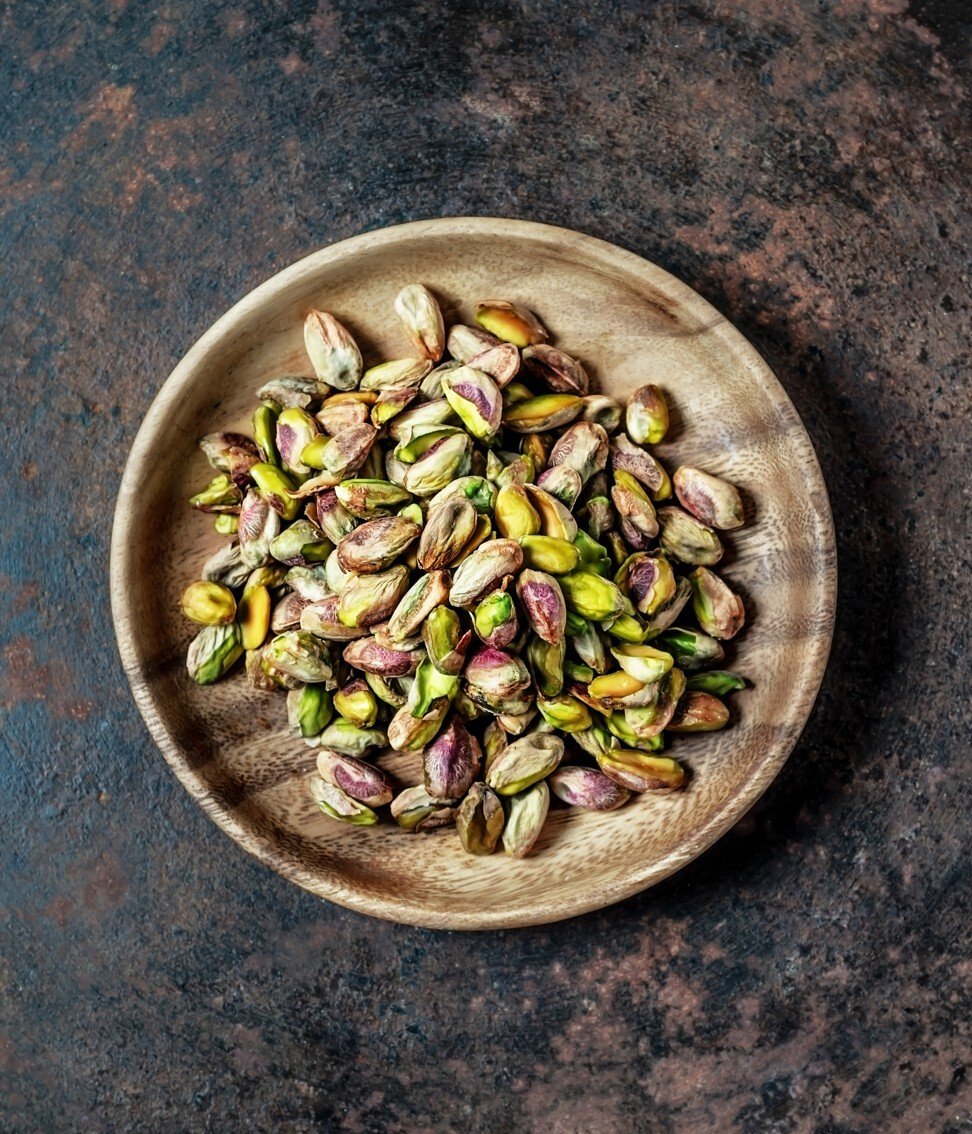
Story of the pistachio: the nut’s origins in the Middle East, and how Italy grows the finest variety, newly popular in China
- Known in China as the ‘smiling nut’ because of its semi-open shell, the pistachio is the seed of a fruit – and the best of them grow in Sicily’s volcanic soil
- Too pricey for serving as salted snacks, they are prized by makers of confectionery and ice cream and have health benefits, such as lowering cholesterol levels
Sicily’s premium pistachios are so coveted that local police use helicopter patrols to guard the harvest. Long known for its connections to the mafia, Italy’s southernmost province also has to contend with pistachio hijacking.
Dubbed “green gold”, or just “the emerald”, this choice pistachio variety is grown in the countryside around the town of Bronte, where the black volcanic soil of Mount Etna, one of the world’s most active volcanoes, has made the terrain particularly fertile. The most expensive pistachio in the world, the Bronte variety is the king of the pistachio family.
Thieves try to ravage these Sicilian pistachio plantations once every two years, in September when the harvest begins. The estate owners abandon their homes in town and move temporarily to their plantations, where they stay in their country houses and make the most of the harvest with long picking days in an attempt to keep the bandits at bay.
A smaller yield of pistachios comes from the nearby town of Raffadali, where centuries-old plantations grow in a mineral-rich earth that is said to enhance the nut’s sweet flavour.

With 4,000 tonnes produced each year, Italy accounts for just one per cent of global pistachio production, but the Italian variety’s prestige is increasing and conquering Asian markets, primarily Japan and Thailand, and is slowly gaining favour in China.
Chinese gourmets like the pistachio; they call it affectionately the “smiling nut” because of its semi-open shell, which looks like a smile. Despite its appearance, however, the pistachio is not a nut, but the seed of a fruit.
Did fish sauce in Vietnam come from Ancient Rome via the Silk Road?
Italy, despite its tiny production share, is among the top seven pistachio producers in the world and its succulent variety is considered to be the “elite pistachio”, highly sought after for confectionery and pastry-making.
Carmelo Spitaleri is vice-president of the Bronte pistachio consortium, granted Protected Designation of Origin (PDO) status by the European Union because of the exceptional qualities of the pistachio – a result of the specific nature of the land where it is grown.
“It’s the magical black volcanic soil of our land,” Spitaleri says. “Bronte’s pistachios grow at the feet of active Etna craters. The trees jut out of lava stones along old lava flow scars, which make it impossible to use any kind of machinery. Man does all the work.

“The pistachios are hand-picked and left out to dry in the sun for a few days, scattered on cloth. Never salted, nor toasted. The harvest is every two years, making it even more prestigious and rare.”
The Bronte consortium unites some 500 producers, who between them farm 4,000 hectares. Most sell not just the dried nuts, but food ingredients made from them, such as a sweet, dense paste used by the pastry industry in the making of cakes and pastries, and to flavour ice cream.
Roughly 80 per cent of the Italian pistachio harvest is sold unshelled, Spitaleri adds, and the rest turned into pistachio cream and other products such as pistachio pesto.

The ancient Romans were the first to import the seeds of the pistachio tree to Italy from their Middle Eastern colonies, and knew the nut by its Greek name, “pistakion”. But it was the Arabs who conquered Sicily in the Middle Ages that began extensive cultivation of the trees there. Pistachios are called “fastuca” in the Bronte dialect, a term derived from an old Arab word. By the 1700s, Bronte was a flourishing pistachio trade hub, luring merchants from across Italy.
Compared to the varieties grown in California and Iran, Bronte’s pistachio is softer and smaller. It has an elongated shape, with an emerald-green kernel streaked with deep-purple shades. Its thin outer peel is also purplish, and it is sweeter and more oily than other pistachios, which makes it ideal for confectionery. Many Italians like pistachio-cream-filled panettone – a golden muffin eaten at Christmas.

“I once had a group of Chinese tourists eager to see how we clean and treat the pistachio; they were fascinated by the bright green colour and the savoury taste and aroma,” says grower Nino Paparo. “The merit all goes to our land, that is our fortune. We’re not just good at what we do, we’ve been blessed with a gift.
“Ours is not made to be savoured raw, unshelled, like the other world types, tasted during happy hours with chips,” he adds. “It would lose its genuineness; it would be a pity and a waste of labour and money given the low yield and high cost. That’s why you’ll never find toasted salted Bronte pistachios anywhere.”
During Bronte’s annual pistachio fair, tourists can try a snack called green arancini – fried crispy rice balls with a pistachio and tomato ragout – pasta with pistachio and shrimps, and grilled meat served with pistachio cream. There’s even pistachio pizza.

Popular cakes include pistachio “little horn” cornetti, shaped like croissants and served at breakfast; iris, a fried bun covered in pistachio crumbs and filled with pistachio cream; and filletta, a saucer-shaped pistachio brioche.
Pastry chefs hail the versatility of Sicilian pistachios, saying they blend with everything, both sweet and salty. Velvety pistachio cream has become an elite substitute for the chocolate spread Nutella. It’s pricey, though: one kilogram of Bronte PDO pistachios costs €40 (US$47) to €45.
“It’s the very oily, high concentration of lipids due to the lava soil that gives [the Bronte pistachio] that unique flavour, quite unlike the dry texture of other world pistachio varieties, which are lacking both in colour and taste and don’t give any added value to dishes,” says Spitaleri. “It’s also healthy: 50 grams per day helps you feel better and reduces blood cholesterol levels.”

The pistachio was believed to be a powerful aphrodisiac, he adds. Admiral Horatio Nelson was given a castle in Bronte in 1799, and Spitaleri says that in the following years Britons became increasingly enamoured with pistachios.
The pistachio grown in the Sicilian town of Raffadali is slightly sweeter and greener than Bronte’s, according to Carmelo Bruno, an agronomist of the Raffadali pistachio association.
“Both types are excellent, but ours is even more oily due to the different weather and mineral-rich soil of Raffadali, which is not volcanic but chalky and calcium-rich, allowing the tree to better absorb the earth’s nutrients and enhancing the sweet flavour by making it more distinctive,” Bruno explains.

Raffadali’s pistachio does not yet have PDO status. For now, the town’s pistachios are not exported and consumption is restricted to Italy. Even so, there is rising interest from Asian buyers, says Bruno, whose family has been growing pistachios for generations.
A South Korean television production team recently toured the ancient plantations to delve into Raffadali’s pistachio tradition and the work of local farmers.
Raffadali’s pistachio association unites only 90 producers and their produce is slightly less expensive. One kilogram of locally grown shelled pistachio costs €30.

Each year Raffadali, known for its Arab-style architecture, holds its picturesque FastucaFest, with cooking exhibitions and tastings of local treats such as pistachio meatballs and a sweet couscous made with grated pistachios, candied fruits and almonds.
Raffadali’s speciality cakes include curly-shaped green pistachio ricci biscuits, pistachio-filled tube-shaped cannoli pastries, and pies filled with a blend of creamy pistachio and ricotta sheep’s milk cheese.
Visitors to Raffadali can join guided tours that wind through a maze of centuries-old plantations stretching across hills dotted with primitive caves, a necropolis and other archaeological sites.

Scavengers, including small boys, are discouraged. “When I was a kid I remember my granny telling me scary bedtime stories of how eating too many pistachios was bad for me and I’d get stomach worms,” Bruno says. “That was just a clever lie meant to scare me away and stop me from devouring pots full of pistachios; they’re so yummy. It was a popular tale for greedy children.”

